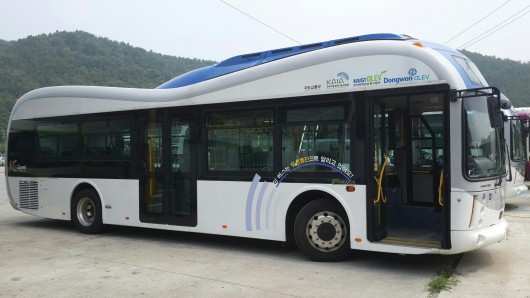Have you ever heard of OLEV?. Well it stands for Online Electric Vehicle and an OLEV system has recently been implemented in South Korea’s city of Gumi. With this system, electrical cables embedded beneath the road transmit electrical power to the buses in Gumi — two of which were introduced on Tuesday — allowing them to travel with the aid of only a relatively small battery.
Power is provided to the buses due to the magnetic field generated by the cables embedded beneath the road’s surface. This magnetic field then induces an electric current in the underside of the vehicle on a continuous basis or at regular intervals providing re-charges to a small battery located within the vehicle. Implementing this type of system requires about 5 to 15 percent of the road’s surface to be excavated — a relatively small amount.
The buses utilizing the OLEV technology will travel a 24 km(15 mile) trip between the train station in Gumi inner city and the In-dong district. A 17cm(6.7 inch) gap between the underbody of the buses and the road will be maintained at all times and the electrical cables will provide 100kW(136 horsepower) at an efficiency of 85 percent max. Electromagnetic field levels are said to be within a safe limit and pedestrians and drivers of non OLEV vehicles will not be exposed unnecessarily to magnetic fields as the cables beneath the road will only switch on when a bus is detected.
While it is true that this is the first instance of OLEV being used for public transport, the technology has also been tested out in a tram at an amusement park in Seoul, so engineers working on the project would have been able to improve on the technology and work out any kinks so the technology would have been refined somewhat before being implemented on a larger scale — for all the skeptics out there.
[via Gizmag]

 Email article
Email article




